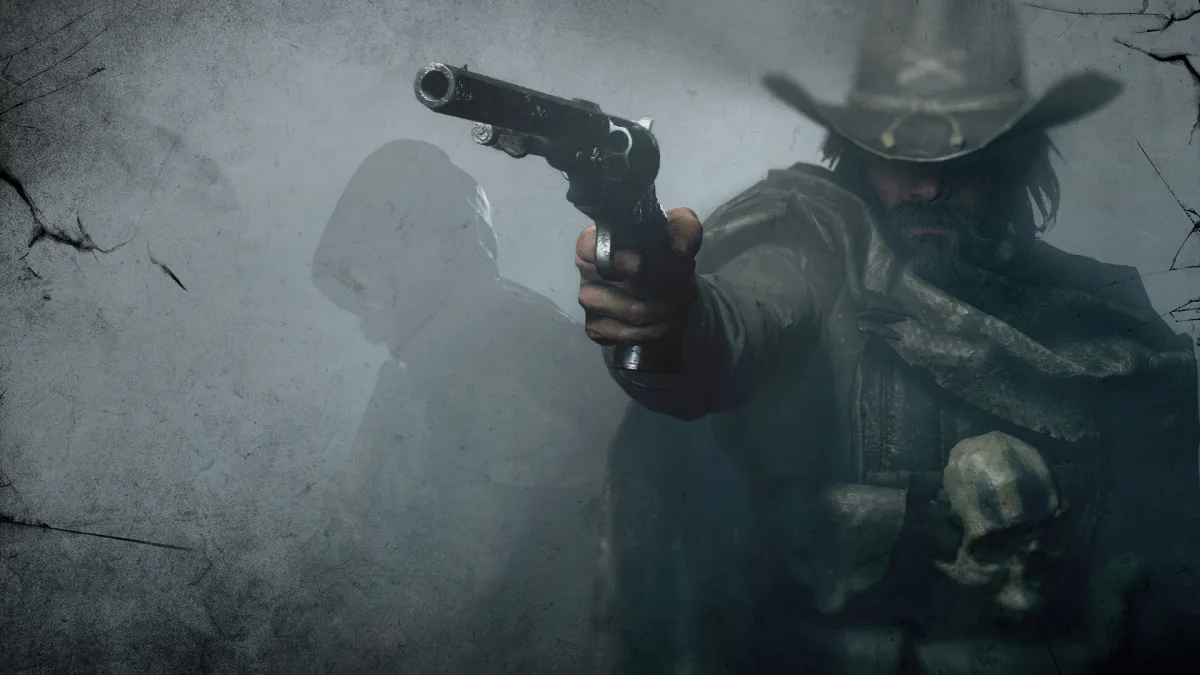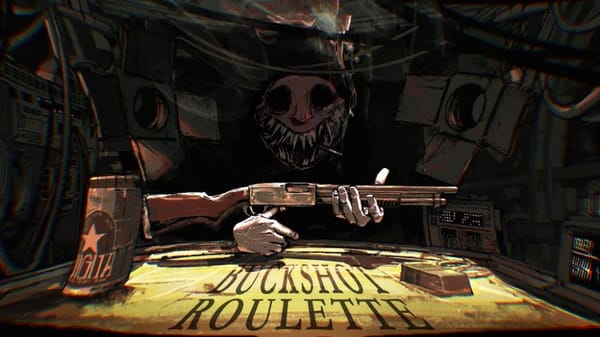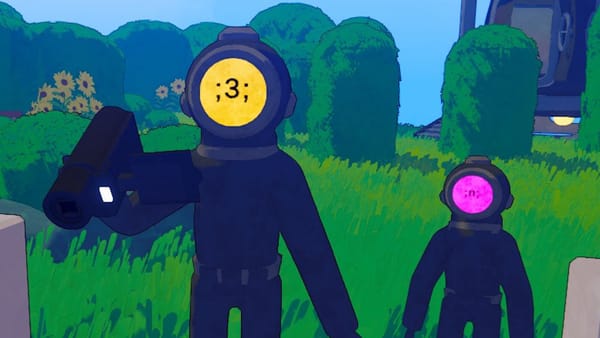Extraction Shooters: The New Battle Royale?

For the past month I have been diving deep into The Cycle: Frontier, a game that is equally punishing as it is rewarding to those who can handle it’s mix of PvPvE. It was an instant slam dunk for me, taking all the systems that I love from HUNT: Showdown, and Escape From Tarkov, but putting them in a digestible and polished casing that pares down all the dead weight to distill the experience into something far more palatable. The other week Chaise shared his thoughts on the game as a seasoned Escape From Tarkov veteran, and that prompted me to start thinking – are Extraction Shooters the new Battle Royale?
Watch the video version of this essay
Extraction Shooter is not an agreed upon genre name yet (but if I have my way it will be, along with Gated Progression Adventure), but it’s a genre that is steadily rising. I noticed that every blog and YouTuber on the planet seemed to compare The Cycle: Frontier as a TarkovLite experience, but the rise of Extraction Shooters absolutely cannot be denied at this point. The issue is the language that surrounds them.
VIGOR from Bohemia Interactive calls itself a “Looter Shooter”, while Scavengers claims to be “Strategic Survival Battleground Shooter”. The Cycle: Frontier is a “Competitive Quest Shooter”, and HUNT: Showdown says that it is “a high-stakes, tactical PvPvE first-person shooter”. Even the founding father Escape From Tarkov bills itself as “a hardcore and realistic online first-person action RPG/Simulator with MMO features”.

While the marketing teams may be desperately trying to stand out from their competitors, the DNA of an Extraction Shooter is rather simple. An Extraction Shooter will have players spawning into a map that features PvE combat, scavenging for supplies or high-value items, and eventually escaping via an extraction point. While PvE is a very important element, the tension comes from the PvP combat around the edges; while you’re out there gaining precious supplies and completing quests, a number of other players will also be out there competing for the same loot. It’s a dance of finesse as you try not be too greedy, while also standing your ground to exfiltrate victoriously, living to fight another day. If you fail however, then you lose all the gear and items that were on you for good.
Each game does this slightly differently. The meta-progression of HUNT: Showdown is far more high stakes than Scavengers for instance, and then Escape From Tarkov raises them even further again. The difficult balance for developers to strike is that losing your gear will hurt, but finding precious loot is worth the risk time and time again.
But how did we get here? A relatively small genre that was in its infancy in 2012, to now having AAA studios throwing their hat in the ring to capitalize on the craze that Tarkov popularized?
The DayZ Effect

I’ve said it time and time again, but the effect that DayZ had on the industry when it surfaced as a mod for ARMA II in 2009 can not be understated. Shooters of the time could be largely categorized into three genres. You had the explosive success of online competitive shooters with XP gains and unlocks thanks to the release of Call of Duty 4: Modern Warfare in 2007. You had the PC contingent of military sims ranging in their realism levels from Counter-Strike: Source, right up to ARMA and Red Orchestra, and finally you had the single-player story shooters, such as BioShock.
Each game for the most part fit neatly in that pile, and then along comes a mod that completely changed the perception of what a shooter could be. Built on the impressive simulation mechanics within ARMA II, DayZ created the ultimate survival shooter. The concept was simple: survive for as long as possible from the undead, and also the other players on the server who were trying to do the same. Almost overnight the entire industry was talking about the emergent storytelling that DayZ afforded. Dean Hall, the creator of the mod, described DayZ as something of an “anti-game” as it broke what he felt were generally considered to be basic rules of game design such as balance and not frustrating users.
While Hall and Bohemia interactive decided to develop DayZ into a stand-alone product that would take years, and be fraught with missteps, other developers started to take the formula and build out their own games. Many could argue that we don’t get to Rust without DayZ. I’m arguing that we don’t get to Extraction Shooters either without the release of the mod that proved that anything was possible.
The Fork In The Road

In 2012 BattleState Games begin preliminary work on Escape From Tarkov. What their initial design document was, I can’t say that I know. But given their previous release Contract Wars is set in the same universe, we can safely assume that Escape From Tarkov was always destined to be a smaller, more intimate game.
That same year we see things start going the opposite way however. As the DayZ mod starts to catch on, we get the release of Survivor GameZ; a last-man standing deathmatch tournament that pitted 32 players into 16 duo-squads within DayZ. Held as an online invitational streaming tournament, this special game mode would go on to directly inspire Minecraft’s Survival Games mod, and of course Player Unknown’s Battlegrounds.

Over the next five years the attempts to launch the Battle Royale genre were constant. Mod after mod for popular shooters were being released, with H1Z1 being one of the few that started to get some mainstream traction in 2015. Brendan Greene, also known as PlayerUnknown, was one of the leading developers of the genre, and after his work on H1Z1 he headed over to South Korea to make a MilSim version of the Battle Royale concept that would release in 2017 and completely change the industry. I am of course talking about PUBG, the game that officially spawned the “100 players jump out of a plane” concept that would plague every single game pitch meeting for the next few years.
The Slow Burn Of The Extraction Shooter
In the years that followed, the Battle Royale genre went on to grab mainstream attention, with games like Battlefield V, and Call of Duty: Black Ops 4 both including their own take on the last-man standing concept. Then there was the unstoppable rise of Fortnite, a once survival base-building game pivoting across to a Battle Royale builder literally overnight, and becoming the biggest media property in the world.

While it certainly was not first, PUBG was the game that popularized the concept of Battle Royale in the mainstream. And at the time, it was truly a marvel to see 100 players crammed into a plane, launching out of it, and fighting for survival in a game that was filled with marvelous jank, and the perfect mix of serious sim meets arcade experience. It featured systems like realistic bullet drop, but also had frying pans that saved many a combatants’ backsides . It’s success changed the focus of shooter developers for years to come. Leaving the rut of fast-paced XP-based multiplayer deathmatches behind, creators were focused on creating their own version of “100 players jump out of a thing, and try to survive”.
The problem with this model is that your game needs to be successful from day one, to make sure that there is a constant churn of players to avoid long queue times, and to keep people hooked into the system. When every shooter is trying to do the same thing, the innovation started to fade. There’s only so many changes of scenery that can hook a niche, which is why we saw a glut of Battle Royale concepts on the front page of Steam, and only a handful of them survive.
But while so many creators were focused on scale, a number of developers saw an opportunity to create smaller, more intimate experiences. These focused on creating unique objective-based systems that forced players to cooperate and focus on the moment at hand rather than just diving into the fruitless pursuit of “the chicken dinner”.
Escape from Tarkov show an upcoming update at Summer Game Fest 2021
Escape From Tarkov takes a smaller player count, and runs with it. Players launch into a Raid typically with a quest in mind. They will be moving along their chosen route, picking off the savage NPC enemies (Scavs), but also be facing off against other PMC players who are looking to loot and extract with goodies to sell. The interesting thing with Tarkov is that sometimes those Scav characters are actually real-world players, which means that while a player can run the math of how many live PMCs are running about, they have to be careful lest a skillful player Scav take them out and steal their precious gear.
Tarkov really inspired a contingent of developers with it’s hardcore approach to progression. In Escape From Tarkov one of your main goals is to continue upgrading your Hideout – a personal bunker that when upgraded grants passive bonuses and unlocks with the in-game traders. Completing quests increases your reputation with the traders, which makes gear more affordable and readily available, and then interacting with the in-game player-driven Flea Market allows you to make stacks of cash to make sure you have the gear to survive. It’s part stock market simulator, part private military contractor simulator, which is definitely extremely overwhelming for new players.
Tarkov wears that bristle as a badge of honor, renowned across the entire player base for just how inaccessible, insufferable, and hardcore of a simulator it is. I cannot tell you know many times I have launched into raids with the wrong bullet size for my guns, leaving me a helpless child rather than a fierce warrior on the battlefield. Tarkov is not interested in helping you at all, instead it forces you to learn its esoteric mechanics and demands that you accept them or move on.

That definitely created some room to move for the genre, which is when we started to see games like HUNT: Showdown, and Vigor arrive to the scene. HUNT: Showdown takes place in a post-American Civil War on the Louisiana Bayou, filling its worlds with cowboys, outlaws, and the supernatural forces of zombies, demons, and witches. It’s a serious mood, one that is as unforgiving as it is intriguing. The time period means that the gun play is completely different to most modern shooters, replacing the standard SMG with a six shooter, or a single-shot rifle that demands you keep calm, land your shots, and enjoy the ride. Not only does the theming bring something new to the table, but the combat and the supernatural elements give it a strong niche to hold.
And unlike the scale of 100 players, HUNT: Showdown puts a maximum of 12 players on the map, all of whom are vying for the bounty tokens that are awarded after killing the boss on the map. Instead of a ring drawing players into the center of a map, it’s the goal of taking out the boss and extracting with the bounty token that naturally pulls players together. Mixed in with dozens of dangerous zombies, hell hounds, water demons, and other ferocious horrors, a good Hunter will try their best to keep a mental tally of how many other player characters still remain breathing. Being able to calculate how many foes you may be facing off against during a boss encounter with a gigantic spider is an important aspect of the game. PUBG simply cannot provide this dimension of gameplay.
The Cycle: Frontier is scratching a similar itch to Tarkov, but in a very different way. It too has a living quarters that you upgrade over time using resources you find out in the field, and it also has faction rep to build by completing quests. However, it’s brand of sci-if Extraction Shooter offering is heavily focused on tackling the various wild creatures on the battlefield, collecting resources, and finishing those quests to progress. It has less focus on the guns, and is more about the mastery of your environment.
But the common thread that links all of these is the inevitable gear fear. When you die out in the field in all of these games, you lose all of your items. All of your progress. All of your resources. Making it out alive with your kit intact, and a backpack full of useful resources is more important that racking up kills most of the time. The tension that you often face when being chased down by a player while trying to protect that amazing weapon and awesome backpack that you scrimped, saved, and scavenged for is something that never truly goes away. It’s the fear of loss that truly makes these games tick.
Imitation Is Not Always Flattering
That’s why I truly believe that Extraction Shooters are destined to be in the fringes of the mainstream. We’ve already seen DICE try, and spectacularly fail with a Tarkov inspired game mode in Battlefield 2042 called Hazard Zone.
This mode put players into squads of four, choosing from a set of operatives before jumping into a map against another 7 squads and AI NPC enemies. The idea was to duke it out on the map, stealing as many data drives as possible before extracting out with your spoils. While Hazard Zone did indeed feature gear loss upon death, the main issue is that the gear didn’t have a story behind it. In Tarkov you are in intense shootouts, scraping by the skin of your teeth, to pull out some GPUs from broken servers, or medical kits to sell to the traders, just so you can afford bullets for your gun. In HUNT: Showdown you had to defeat a posse of two cowboys, while being chased by a giant spider just to get enough Hunt dollars to afford that fancy lever-action rifle. That was never the case in Hazard Zone. DICE has sanded down the corners to a nice sheen, and the mode lost all edge that it claimed it had in the myriad of trailers.
Suffice to say that Hazard Zone was a failure, and it has since been removed from the game. People enjoy these games because they are challenging, because each encounter is a meaningful experience. I don’t see any AAA studio making an unwelcoming, brutal Extraction Shooter any time soon, and to be honest, I’m definitely okay with that.
The Future Of Extraction Shooters
We are definitely seeing more studios playing in this space, and I expect that the recently announced Hyenas from Creative Assembly will be the tipping point for the AAA developer interest. If the creators of Alien: Isolation manage to make their pop-culture fueled war in space hit with an audience, then that will spur on a gold rush to make the next big extraction shooter from similar sized studios. If it falls flat on its face (and hey, that trailer is definitely not awe-inspiring in my opinion), then perhaps we will see the genre stay with the mid-tier and indie developers out there who are content with pushing the boundaries to see how complex we can get in this field.
While I may have started writing this piece due to my interest in The Cycle: Frontier, I recently managed to get caught up with Marauders. It’s an exciting new Extraction Shooter where you play as space pirates who are fighting over the scraps in order to survive, and build their frigates. Escape From Tarkov continues to add new maps, new quests, and they are even launching an entirely new stand-alone game mode. HUNT: Showdown just dropped a new area to one of their maps, and continue to tweak the formula. There’s a lot happening.
Yeah. The future is looking very bright for the Extraction Shooter.



